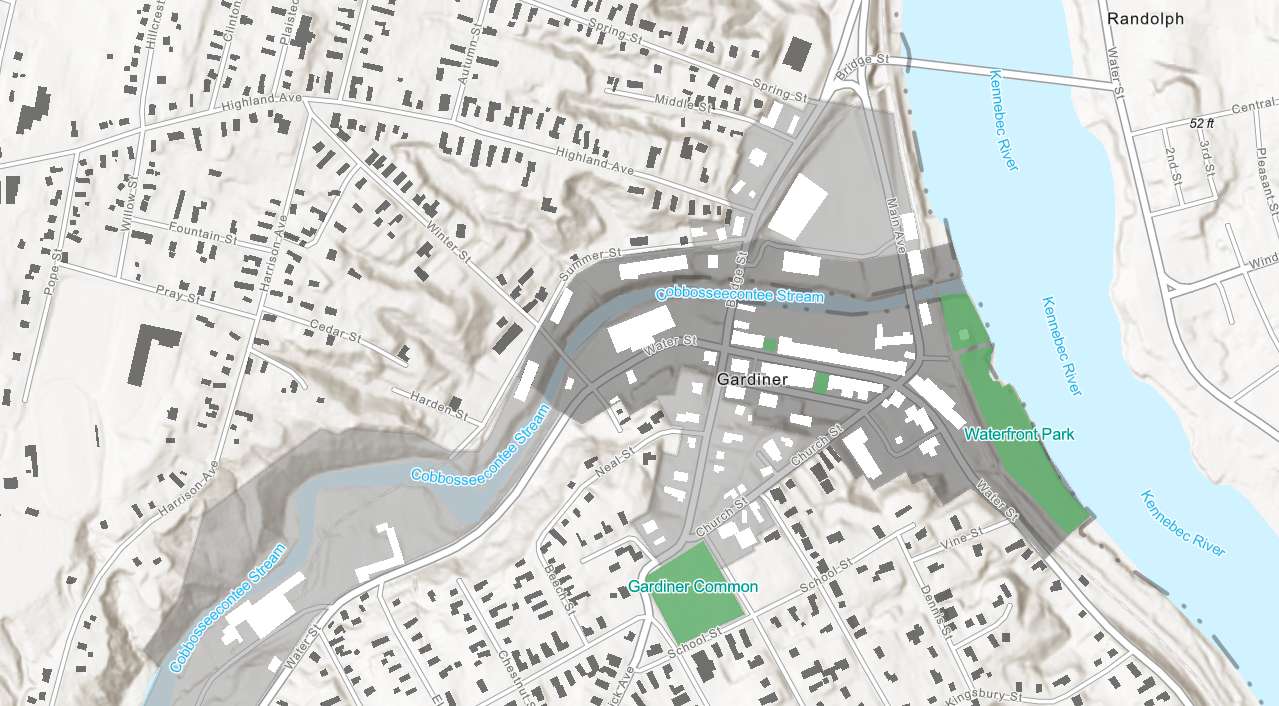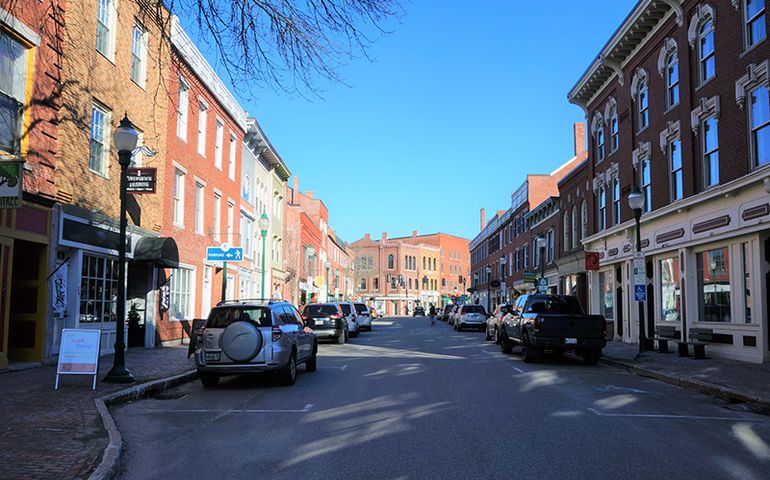
Gardiner downtown plan will focus on economic growth, climate change
 File Photo
In Gardiner, half of the commercial real estate is at risk of being flooded badly enough to become unusable or unsafe, a new study finds.
File Photo
In Gardiner, half of the commercial real estate is at risk of being flooded badly enough to become unusable or unsafe, a new study finds.
Gardiner has launched work on a 10-year downtown master plan, an extension of its comprehensive plan, but with a focus on resilience, adjusting to the effects of climate change, and economic growth.
The master plan is supported by a Coastal Communities Grant made to projects that are tackling climate change adaptation. The city was awarded the grant last fall by the Maine Department of Agriculture, Conservation and Forestry, which administers the National Oceanographic and Atmospheric Administration program.
This grant program is designed to ensure sustainable and vibrant coastal communities, improve coastal public access, address effects of land use activity on water quality, restore coastal habitats and prepare for future storms, erosion, flooding, and other coastal hazards.
The city applied for the grant with putting together a downtown master plan in mind, said Tracey Desjardins, the city's economic development director. The last plan was completed in 1999.
"Things have changed downtown since then," Desjardins told Mainebiz. She said as the city looks to build its economic foundation, a master plan is necessary to apply for Community Development Block Grants and other funding.
The downtown master plan "will provide the roadmap for implementing the community’s vision for the future of the historic downtown while addressing the grant program’s priority goals," the Heart of Gardiner website says. The project is a collaborative effort between the city, Gardiner Main Street, Kennebec Valley Council of Governments and Maine Coastal Program.
The city's downtown is bracketed by the Kennebec River and Cobbesseecontee Stream, which is part of one of the state's largest watersheds. It has an impact on habitat stretching from miles inland down to Merrymeeting Bay, and is also increasingly subject to flooding as the ocean warms.
The relationship between the waterways and downtown is very important, Desjardins said. "As we know, most communities that have waterways attract people to live and visit," she said. It enhances the economy and vibrancy of the city, and downtown growth can't happen without focus on the natural resources.
The master plan effort is also part of the ongoing Gardiner Community Heart & Soul initiative, which began in 2012 to reverse the city's declining population and business core, and aimed at the city in its entirety. The downtown master plan will zero in on the city's core, taking an in-depth look at ways to improve and revitalize downtown, taking advantage of the historic streets and buildings and the important natural setting of the city, those behind the effort said.
A major step in the planning process is community input, and the city is asking residents, through an online survey, what their vision is for downtown Gardiner. The city is having a public session July 14, and hopes to have a plan done by October, with the City Council voting on it in November.

Part of Gardiner's ongoing resurgence
The initiative comes as the city of 6,000, 6 miles south of Augusta, continues to add businesses downtown and grow as a visitor destination. Gardiner is one of the 10 Main Street Maine communities in the state, a national program that helps with development. Two years ago Gardiner was awarded a Historic Commercial District Revolving Fund loan from Main Street America that provides no-interest loans to business owners for facade and other improvements to historic buildings.
The city also got a grant to upgrade McKay Park, which is in the heart of downtown and will be another factor in making downtown attractive to businesses and visitors, Desjardins said. A public visioning session was recently held in the park.
The city's natural setting is also getting attention. The Cobbossee Pedestrian Trail is being completed along the portion of the stream that runs through downtown Gardiner, connecting to other trails.
Last fall, an upgrade to a dam on Cobbosseecontee Stream was completed, allowing migratory fish passage for the first time in 259 years, bringing the Cobbosseecontee watershed closer to producing enough fish for commercial fishing. Once other dam upgrades are completed, alewife passage would be fully restored, which is expected help boost the economy of Gardiner and towns upstream by enhancing the ecosystem and offering more commercial and recreational fishing opportunities.
A letter to officials of Gardiner and other Cobbossee watershed towns from the commissioners of three state departments April 27 gave assurance that water quality in the Cobbesseecontee watershed can be maintained as fish passage is restored, and acknowledges the economic impact of bringing back the fish.
The letter cites petitions from Cobbossee watershed towns to the Massachusetts legislature in the early 1800s after the first dams in Gardiner were built, asking for fish passage that never came.
"Alewives are part of the cultural legacy of towns all along the drainage, restoring native sea-run alewives and other native species can provide many ecological, social and economic benefits throughout all the natural systems where they are found currently," said the letter from Melanie Loyzim, commissioner of the Maine Department of Environmental Protection; Patrick Keliher commissioner of the Maine Department of Marine Resources; and Judith Camuso, commissioner of the Maine Department of Inland Fisheries and Wildlife.
Mainebiz web partners
I lived in West Gardiner for a while and it certainly has untapped potential - great location on the rivers, handy to 95 and 295 and a crossroads of southern Maine. It even has a Reny's and the A-1. But it does seem not much effort was put into having visitors stick around.
Route 24 south could be a really nice bike route with a bit of effort and joined-up thinking. It's remarkably level by Maine standards as it follows the river and much of it has a decent shoulder. But in usual Maine tradition, the shoulder just randomly disappears here and there - forcing cyclists out in the lane with the transport trucks. Maybe someday the Maine DOT will think "links in a chain". We can hope










1 Comments